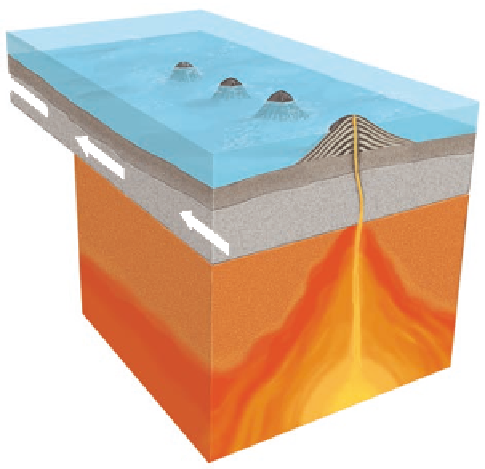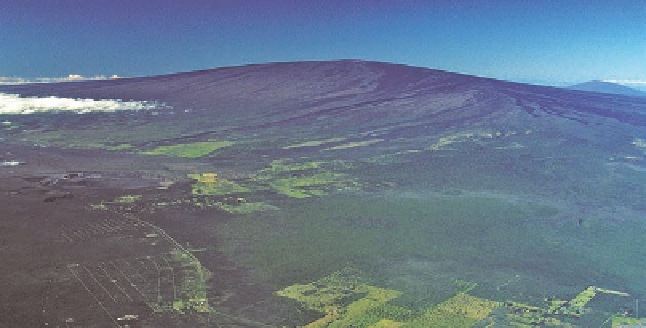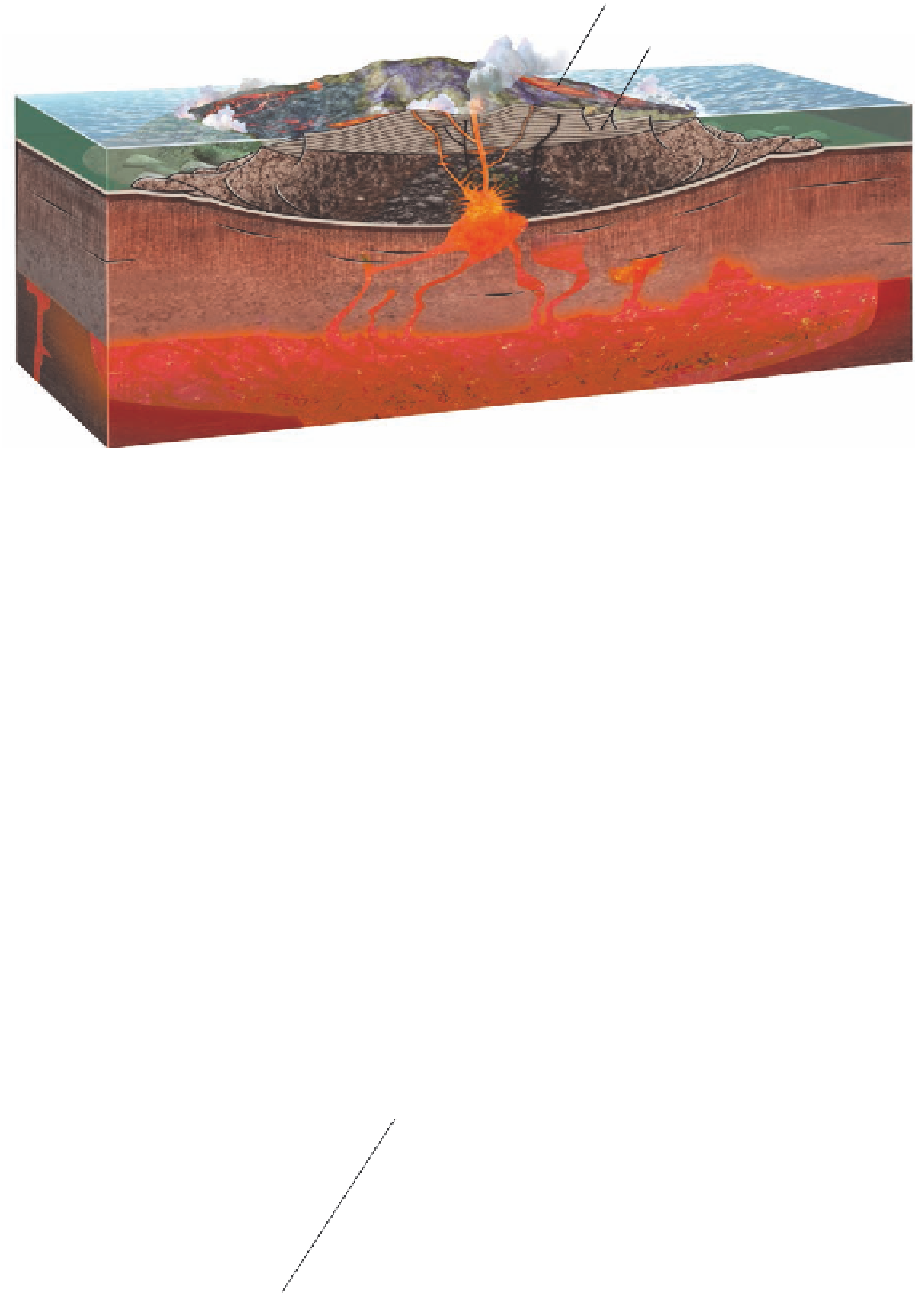Geoscience Reference
In-Depth Information
Lava
fountain
Magma
chamber
Widespread lava flow
Central vent
Figure 13.39 Shield volcanoes.
Shield volcanoes are broad, low
features that surround a central
magma chamber. Magma associ-
ated with shield volcanoes typically
has a low viscosity, which allows it
to flow freely in broad streams of
molten lava.
Layered basalt deposits
Mantle plume
Hotspots
The previous discussion focused on volcanoes that form
along subduction zones and rift zones. In some cases, how-
ever, a volcano is associated with a stationary zone in the as-
thenosphere where upwelling magma from a mantle plume
is released at the surface. Such a geologic feature is called a
hotspot
. Although hotspots occur more randomly than sub-
duction zones and rift zones, which can be traced for great
distances, they are associated with some of the most intensive
volcanic activity on the planet. These eruptions can be of ei-
ther a fluid or explosive nature.
A great example of fluid eruptions associated with a hot-
spot can be seen in the state of Hawaii, which lies in the middle
of the Pacific tectonic plate where the
Hawaiian hotspot
occurs.
The hotspot currently underlies the island of Hawaii, which is
the easternmost island in the chain (Figure 13.40a). This hotspot
is releasing highly fluid magma that has built a variety of shield
Hotspot
A stationary zone of magma upwelling that is associ-
ated with volcanism within the interior of a crustal plate.
Pacific plate
Kauai (oldest)
Oahu
Maui
Hawaii
(youngest)
Direction
of plate
motion
(b)
Mauna
Kea
Huala-
lai
Fixed hotspot
Mauna Loa
(a)
Upwelling magma
(mantle plume)
Figure 13.40 The Hawaiian Hotspot.
(a) This hotspot is fixed because it is
at the top of a mantle plume. The Hawaiian island chain has evolved through
progressive movement of the Pacific plate over the hotspot. (b) Mauna Loa is
the largest volcano on Earth. (c) The island of Hawaii consists of five separate
shield volcanoes.
0
0
30 km
20 mi
N
(c)
























